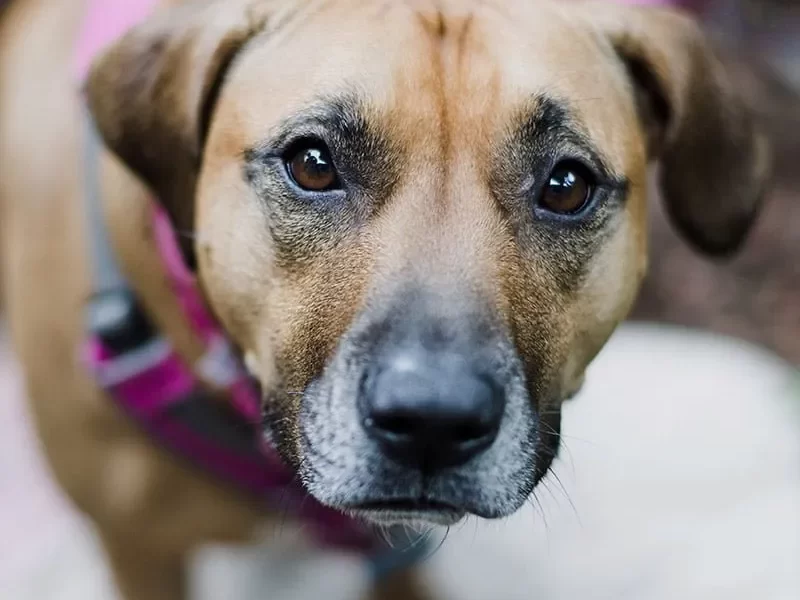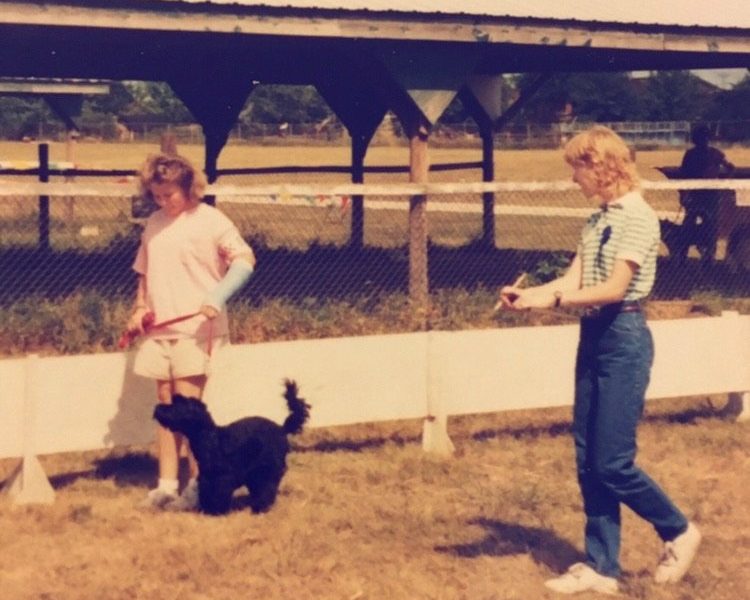Livestock guardian dogs (LGDs) are a vital part of many farms and ranches. These courageous canines serve as protectors, deterring predators and keeping livestock safe. However, unlike their herding counterparts, LGDs don’t respond well to traditional training methods. Their success hinges on a strong bond with their flock and an understanding of their natural instincts. So, how do you raise a reliable ranch partner from a fluffy LGD puppy?
Contents
- Early Socialization is Key
- Bonding with the Flock
- Living Like the Flock
- Obedience Training – A Balancing Act
- Addressing Unwanted Behaviors
- Addressing Predation
- Breeds and Temperament
- Working with an LGD Specialist
- The Long Haul
- Regular exercise and mental stimulation for a well-rounded dog
- Adjusting training techniques as the dog matures
- The Rewards of a Reliable Partner
Early Socialization is Key
LGDs are bred to be independent thinkers, often working autonomously alongside livestock. This independence, however, shouldn’t translate to aloofness. Early socialization is crucial. Introduce your puppy to a variety of sights, sounds, and people during the first few months of life. This helps them become accustomed to new experiences and reduces the likelihood of fear-based aggression later on.
Bonding with the Flock
Unlike herding dogs who command livestock, LGDs view themselves as part of the flock. This bond is essential for effective guarding. Ideally, introduce your puppy to the livestock they’ll be protecting while they’re still young. Start with supervised interactions in a safe, enclosed space. Gradually increase the duration and frequency of these interactions, allowing the puppy to become familiar with the sights, sounds, and smells of their charges.

Living Like the Flock
LGDs are most effective when they live alongside the livestock they protect. This allows them to constantly monitor their surroundings and respond quickly to threats. Provide your dog with a weatherproof shelter within the pasture, but avoid making it too comfortable. They should feel most at ease when they’re with the flock.
Obedience Training – A Balancing Act
While LGDs don’t require extensive obedience training like working dogs, basic commands are still important. Teach your dog to come when called, wear a leash comfortably, and tolerate basic handling. This makes veterinary care and occasional confinement less stressful. However, avoid excessive training that might undermine their independent nature.
Addressing Unwanted Behaviors
LGDs may exhibit behaviors that, while natural, can be problematic. Chasing or barking excessively at livestock can be disruptive. Here, patience and positive reinforcement are key. Redirect your dog’s attention with a toy or a command when they exhibit unwanted behavior. Reward calm and focused behavior around the flock.

Addressing Predation
LGDs deter predators through their imposing presence and loud barks. However, some predators may be more persistent. If you experience predation attempts, there are various non-lethal deterrents you can employ. Motion-activated lights, flagging tape, and predator effigies can create a sense of unease for potential threats.
Breeds and Temperament
There are several breeds commonly used as LGDs, each with its own temperament. Great Pyrenees and Anatolian Shepherds are large, powerful breeds suited for guarding large pastures. Maremmas and Komondors are known for their intelligence and alertness. Choosing the right breed for your livestock and environment is crucial.
Working with an LGD Specialist
LGD training can be a rewarding experience, but it also comes with challenges. Consider consulting with an LGD specialist or breeder. They can offer valuable insights into specific breeds, proper socialization techniques, and common behavioral issues.

The Long Haul
Raising a well-adjusted LGD is a long-term commitment. Be patient, consistent, and understanding. LGDs mature slowly, and their guarding instincts typically develop between 8 and 18 months. Throughout this period, provide them with ample opportunities to bond with the flock and observe their surroundings.
Regular exercise and mental stimulation for a well-rounded dog
Dogs are energetic creatures with a natural desire to work and play. To keep them happy and well-adjusted, providing them with regular exercise and mental stimulation is crucial. Just like physical activity strengthens their bodies, mental challenges keep their minds sharp and prevent boredom.
The Importance of Exercise
Regular exercise offers a multitude of benefits for your dog’s physical and mental well-being. It helps:
- Maintain a healthy weight: Exercise burns calories, preventing obesity and its associated health problems.
- Build strong muscles and bones: Physical activity promotes healthy growth and development in puppies and helps adult dogs maintain muscle mass and bone density.
- Improve cardiovascular health: Exercise strengthens the heart and lungs, boosting stamina and overall endurance.
- Reduce stress and anxiety: Physical activity releases endorphins, hormones that promote feelings of happiness and well-being.
- Provide mental stimulation: Engaging in physical activities like fetching, running, or agility courses can be mentally stimulating for dogs.
How Much Exercise is Enough?
The amount of exercise your dog needs depends on several factors, including breed, age, overall health, and activity level. High-energy breeds like Border Collies or Labrador Retrievers require significantly more exercise than their lower-energy counterparts like Bulldogs or Basset Hounds.
- Puppies: Young, growing puppies need exercise, but it should be tailored to their age and development. Short, frequent walks and playtime are ideal.
- Adult Dogs: Most adult dogs benefit from at least one to two walks a day, coupled with playtime or engaging activities.
- Senior Dogs: Exercise needs moderate with age. Gentle walks, swimming, or playtime are good options.
Beyond Walks: Exploring Exercise Options
While walks are a great foundation, consider incorporating variety into your dog’s exercise routine. Here are some ideas:
- Dog parks: Provide a safe space for socialization and off-leash running.
- Swimming: A low-impact, yet effective way to exercise, especially for senior dogs or those with joint problems.
- Fetch and Frisbee: Classic games that most dogs love, fulfilling their natural retrieval instincts.
- Hiking or jogging: For energetic dogs who enjoy companionship during exercise.
- Agility courses: A fun and challenging activity that combines physical and mental stimulation.
The Power of Mental Stimulation
Mental stimulation is just as important as physical exercise for your dog’s well-being. A bored dog is more prone to destructive behaviors like chewing, digging, or excessive barking. Mental challenges keep their minds active, improve cognitive function, and prevent boredom.
Keeping Your Dog Mentally Sharp
Here are some ways to keep your dog mentally stimulated:
- Food puzzles and treat dispensing toys: Engage your dog’s problem-solving skills as they work to retrieve treats.
- Training sessions: Teach your dog new tricks or commands, providing them with a mental workout and strengthening your bond.
- Scent work: Hide treats or toys for your dog to find, engaging their natural scenting abilities.
- Interactive toys: Toys that require problem-solving or manipulation can keep your dog mentally occupied.
- Chew toys: Provide appropriate chew toys to satisfy their natural chewing instincts and keep them mentally stimulated.
Adjusting training techniques as the dog matures
Livestock guardian dogs (LGDs) are remarkable partners, but their training needs evolve as they mature and the livestock dynamics on your ranch shift. The approach that worked for your playful puppy might not be effective for your independent teenager. Here’s how to adjust your training techniques throughout your LGD’s life:
Puppyhood (0-6 months):
This is a crucial period for socialization. Expose your pup to a variety of people, animals, and noises. Start supervised interactions with the livestock they’ll eventually guard, allowing them to build familiarity and positive associations. Basic obedience commands like “come” and “heel” are introduced, but keep training sessions short and positive to avoid overwhelming your pup’s independent spirit.
Adolescence (6 months – 18 months):
As your LGD enters adolescence, their independence will become more pronounced. They’ll start exploring their boundaries and testing your authority. Maintain consistent boundaries while remaining patient. Positive reinforcement with treats and praise works best. Focus on redirecting unwanted behaviors like excessive barking or chasing by offering an alternative activity or toy. Formal obedience training should be minimal during this phase.
Young Adulthood (18 months – 3 years):
This is when your LGD’s guarding instincts typically come into full swing. They’ll be more watchful and assertive around the livestock. Continue to provide opportunities for them to bond with the flock. However, you might need to adjust your training techniques to address specific challenges. For example, if your LGD becomes overly aggressive towards unfamiliar animals, controlled socialization exercises can help them learn to differentiate between threats and harmless visitors.
Maturity (3+ years):
By now, your LGD should be a seasoned guardian, comfortably integrated with the flock. Training becomes more about maintenance and reinforcement. Periodically practice basic commands and reward calm, focused behavior around the livestock. Observe their interactions with the flock and address any emerging issues promptly.
Shifting Livestock Dynamics:
As your livestock herd composition changes – introducing new animals, separating mothers and young, or selling off stock – your LGD might need some adjustment time. Provide additional supervision during these transitions and offer reassurance. They might exhibit temporary anxiety or confusion, but with patience and consistency, they’ll adapt to the new dynamics.
The Rewards of a Reliable Partner
A well-trained LGD becomes an invaluable asset to your ranch. They provide peace of mind, knowing your livestock is safe from predators. The bond you build with your LGD transcends a simple working relationship. These courageous canines become loyal companions, earning their place as cherished members of the ranch family.


